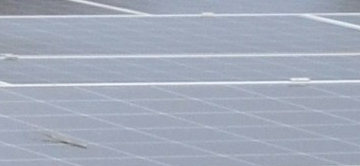Thomas Piquemal’s sensational resignation as EDF's Chief Financial Officer at the beginning of March 2016 - and the ensuing political and media frenzy – have highlighted EDF’s difficulties in building two nuclear generation reactors at the Hinkley Point site in England, and more generally the problems currently affecting the French nuclear sector. This episode is the consequence of errors and failings in public policy, both in Great Britain and France. What lessons can economists draw from it?
1. Background
During the fall of 2008, EDF purchased British Energy, the company in charge of nuclear electricity production in Great Britain. The acquisition’s strategic objective was to participate in the renaissance of nuclear energy in Great Britain (and in other countries), and more specifically to build new reactors on sites where British Energy was already operating.
In 2013, EDF suggested building two European Pressurized Reactors (EPRs), a technology developed during the 2000s jointly by Siemens and Areva, at the Hinkley Point site.[1] After negotiations, the British government guaranteed that all MWh produced by these reactors during the first 35 years of production would be purchased at the price of £92.50/MWh.[2] At the end of 2014, after an enquiry into its compliance with EU rules, the European Commission approved this support mechanism.[3]
Clouds formed over this project in 2015. Firstly, the construction of the EPR reactors proved more difficult than expected. The EPR project launched by Areva in Finland in December 2003 was delayed and billions over budget, which contributed to the near bankruptcy of the company.[4] The EPR project launched by EDF in Flamanville at the end of 2007 was also delayed and billions over budget. Even the Chinese EPR built by CGNPC in Taishan was delayed.
Secondly, EDF's finances turned out to be more fragile than expected. The group’s international expansion in the 2000s was costly, as well as the dividend policy demanded by the French government, EDF’s main shareholder. Lower wholesale market prices reduce EDF’s revenue and profit, probably for a long period. The purchase of Areva NP (formerly Framatome) also contributed to the deterioration of EDF’s financial situation. In March 2016, the market capitalisation of EDF was €21 billion, with a debt amounting to €37 billion.[5] Undertaking a significant investment programme in these conditions was challenging.
Opposed to the decision to proceed with the Hinkley Point project in this context, EDF’s Chief Financial Officer presented his resignation on 7 March 2016. Following the near bankruptcy of Areva, the other French champion of nuclear energy, this resignation highlighted the weakness of the French nuclear sector. In the following weeks, the French President and the British Prime Minister reiterated their support for the Hinkley Point project, and the French government developed a financial support plan for EDF. [6]
2. The market missing from the British model
During the week of 7 March, the British press voiced strong opposition to the Hinkley Point project, particularly to the purchase contract: the price guaranteed by the government, £92.50/MWh, is three times higher than the current market price. Why build a reactor which will produce energy at a price significantly higher than the market price?
To justify its decision, the British government used the following argument: decarbonisation of the production mix is a priority and nuclear power is a significant contributor to carbon-free production. The proof that the government had obtained a good deal for the British was specifically that EDF hesitated before investing.
This argument is only partially convincing. To understand why, we need to distinguish between two levels of decision for nuclear energy (and for most public policies).
The first level of decision is whether to include nuclear technology in the electricity generation mix. This is a complex decision, which goes well beyond economics. On the one hand, nuclear power produces carbon-free electricity reliably and at a reasonable cost. On the other hand, the construction and operation of nuclear power plants requires specific technical skills and also robust governance. The consequences of a nuclear accident are frightening, however rare they might be. Nuclear waste has a lifespan of millions of years. The decisions taken by our generation will also involve (practically) all future generations.
Various countries adopted nuclear electricity production in the 1960s. The USA was a pioneer. In 1946, the legendary admiral Hyman Rickover established a programme to use nuclear reactors to propel the United States Navy submarines and aircraft carriers, considerably improving their performance during the Cold War.[7] The USS Nautilus, the first United States Navy nuclear submarine, was launched in 1954. American manufacturers then used the pressurised water technology developed by the Navy to produce civil electricity. A similar approach was used in the USSR, Great Britain and, to a lesser extent, Canada (which focused on civil nuclear power).
France followed the same approach. In the 1950s, the military nuclear programme allowed France to join the very exclusive club of nuclear powers. This was clearly a political decision. In the 1970s/1980s, the civil nuclear programme allowed France to reduce its dependency on oil imported from the Middle East. Again, it was a political and strategic decision, well beyond mere economic efficiency.
Economists can contribute to this first level of decision by producing cost-benefit analyses, but the final decision is made using broader criteria than simply economic ones.
The second level of decision concerns implementation of the policy. After a State decides to include nuclear power as part of its generation mix, it has to define the economic and financial conditions. This involves solving issues of efficiency, incentives and risk sharing, for which economists have a significant contribution to make.
When the British government decided to renew nuclear power in 2013, it was largely for geo-strategic reasons: North Sea gas was starting to run out, and electricity production using natural gas was leading to a strong dependency on foreign imports, particularly from Russia.[8] Economists do not have a strong argument for or against this choice. However they can propose an informed opinion on the method used to finance these new plants.
The significant discrepancy between the market price and the guaranteed price is due to two weaknesses in the British electricity market. Firstly, as we have said before, the most effective solution to decarbonise electricity production is ... to put a price on carbon. However governments are not keen on this.
Today, the market price of electricity does not reflect the social cost of carbon. In 2010, the British government suggested a floor price for carbon, increasing on a straight-line basis each year to reach £70/tonne in 2030. If we assume that a marginal MWh emits 500kg of CO2, this corresponds to an increase in electricity price of £35/MWh. The reference price would therefore be established at 30 + 35 = £65/MWh. Unfortunately the British government decided in 2014 to maintain the floor price at £18/tonne. [9]
The second weakness is that the British government implemented a capacity mechanism. The market price of electricity therefore only reflects the variable production cost, and not the capital cost of generation capacity. The average electricity price should be increased by approximately £7/MWh to include the capacity cost.[10]
If the market price for electricity included the social cost of carbon and the capital cost of capacity, it would be established at around £72/MWh, closer to the guaranteed £92.50/MWh. The anticipated increase in the price of fossil fuels would make up the difference.
The British government is facing a problem - the discrepancy between the guaranteed price and the market price - which weakens public acceptability, and therefore the implementation of its energy policy. It created the problem itself by refusing to use the electricity price as a signal for the value of the social cost of CO2 and the value of generation capacity. The term “self-inflicted wound” aptly reflects the situation.[11]
3. The market missing from the French model
The sequence of events and public statements following the resignation of EDF’s Chief Financial Officer demonstrated the French government’s strong commitment to the Hinkley Point project. To facilitate the project’s financing, French taxpayers are required to support EDF twice: the government will inject equity capital into EDF, and not take dividends for a few years.
This decision is aligned with the industrial policy followed by the successive French governments for nearly 400 years, which involves creating “national champions”.[12] A fascinating example is the company “Manufacture royale de glaces de miroirs”, a precursor of Saint Gobain created by Colbert in 1655, under conditions which would now shock competition authorities: creation of a Royal monopoly accompanied by subsidies, allocation of this monopoly to a financier, the Orléans tax collector, and protection of the monopoly against competition and innovation for several decades.[13]
The “national champions” which have featured prominently in the politicians’ speeches since the liberation in 1945 are the more recent examples of this industrial policy. This consistency is remarkable and deserves to be recognised. Contrary to popular belief, French governments are very consistent. Revolutions, wars and regime changes have not altered their determination in this matter. Unfortunately this economic policy is counter-productive. Since the start of the 18th century, economists have disputed its “intellectual” foundations, and history has since demonstrated its futility.[14]
The Areva fiasco is perhaps the most shocking failure of a “national champion”. The merger of prosperous companies in the early 2000s to create Areva produced a nuclear giant, which political leaders were proud of for a decade. Now they are trying to protect Areva from bankruptcy, costing the taxpayer around €10 billion.
What caused this fiasco? The immediate cause was the contract to supply an EPR in Finland, which is comparable to Hinkley Point in England: the company agreed to provide megawatthours at a fixed price. However the Hinkley Point contract is considerably more generous.
There is another, deeper cause: the government exercised political and not economic oversight over the company, which lead to a lack of effective control by the shareholders.
The French government controlled (and still controls) Areva as a political project, to portray a certain image of France, while it was an industrial company competing with foreign firms in a globalized industry. For example, the government allowed Areva to take full responsibility for the design, development, and delivery of the EPR in Finland, when nothing in its previous experience suggested it was even remotely qualified for this challenging task.
This confusion between the economic and political aspects is very worrying for the taxpayer. Our objective here is not to question the legitimacy of political decisions. Since the first cities emerged in the Fertile Crescent, and perhaps before, humans were organised politically. Our objective is to clearly distinguish political decisions, for example the fight against climate change, from the economic tools and methods used to reach these objectives. In the case of Areva the tools to be used are a sound capital allocation rules, and a rigorous investment approval process. These extremely ordinary management techniques are taught in every business school and used by thousands of industrial companies. Non applying them Areva is costing the French taxpayer around €10 billion, and the French economy thousands of qualified jobs. Despite the efforts of the "French Nuclear Platform", whose mission is to develop consistent positions against major issues in the French nuclear sector, and to prepare appropriate decisions, this fiasco is a serious blow to the entire sector.[15]
The French government has favoured politics over economics when running its nuclear industry. By doing so, as with the British government, it has compromised the viability of the sector.
4. For an economic analysis of the extension of the existing nuclear fleet
The other “nuclear” topic is the extension of the operation of French nuclear plants beyond their original 30-year life. The debates about this topic are passionate. For both supporters and opponents, the topic is handled as a political, symbolic issue, without any in-depth technical and economic analysis. Contradictory decisions and announcements come one after the other and overlap. On the one hand, EDF is preparing to extend the lifespan of existing plants, for a total cost estimated by the Court of Auditors at €100 billion.[16] On the other hand, during the discussion on the Law relating to energy transition for green growth, members of Parliament argued for hours over the appropriate limit for the nuclear production capacity in France by 2025.[17] The current French President committed in 2012 to close by 2016 the oldest French nuclear plant, located in Fessenheim, leaving to the taxpayer the cost of compensating EDF and the other partners in the plant. Discussions have started between EDF and the government regarding the required compensation amount. Unsurprisingly, they have been difficult.[18]
The distinction between the two levels of decision discussed earlier can bring clarity to this debate.
We have seen that the decision to launch the nuclear programme in France in the 1970s was largely political. So will be the decision to launch or not the construction of new nuclear plants to replace the existing fleet. However, the issues related to the extension of the lifespan of plants are now mainly economic. It is simply about deciding the most cost-effective way of supplying electricity to the French (and European) consumers, in the current context: extending the lifespan of some of the existing nuclear plants, or building new generation assets. It is not a societal choice; it is a technical decision to keep down the cost of electricity bills.
Neither the French taxpayers nor EDF shareholders (who are largely the same) can afford to pay for economically inefficient decisions, let alone for an EDF-sized fiasco similar to Areva’s.
The electricity generation fleet vastly exceeds demand in Europe today, and looks set to remain so for the next few years. The expected demand is nearly stationary, renewable energy production is increasing due to subsidies, and existing plants are not closing quickly enough. In this context, any investment decision must be taken with extreme care. Serious technical and economic analysis must be conducted to determine how many nuclear reactors are economically viable in Europe by 2025, and which among the 58 existing reactors are the most cost-effective.
It is the responsibility of EDF to carry out studies to answer these questions. Given the circumstances, it is not immediately obvious that the answer to the first question is to extend the life of all 58 existing reactors. Perhaps only 45 reactors are economically viable? Or perhaps France's export potential makes it economic to maintain 58 reactors? EDF, who is facing competition in Europe, must decide which reactors are the most cost-effective, and justify the necessary investment to extend their lifespan, and which reactors should be closed. It is the responsibility of the Nuclear Safety Authority to verify the safety of extending the lifespan and closing reactors. It is the responsibility of the French State Holdings Agency to ensure, on behalf of citizens and shareholders, the quality of analyses carried out by the EDF.
* * *
The deployment of a nuclear fleet in France in the 1970s/1980s is an undeniable technical success. It was largely due to a technical and economic decision. At the start of the 1970s, two nuclear designs were competing in France: the gas-graphite technology, developed by CEA and therefore French, and the pressurised water technology, developed in the USA. EDF’s engineers chose the American technology, prioritising technical and economic criteria over political considerations.[19] Governments of the era agreed with the engineers’ opinion, and the French nuclear reactors use the technology developed and sold by the American company Westinghouse. It is vital that the next investment decisions made by EDF prioritise technical and economic analyses. But will the French government and parliament be wise enough to leave engineers and economists decide?
[1] This timeline is based by the presentation given by Thomas Piquemal during his hearing before the Committee on Economic Affairs at the French National Assembly on 4 May 2016. http://videos.assemblee-nationale.fr/video.3895960_5729a32709ed6.commission-des-affaires-economiques--m-thomas-piquemal-ex-dir-financier-d-edf--reglementation-v-4-mai-2016
[2] This corresponded to €111 in 2013, and roughly the same amount the day after the Brexit vote.
[4] The state had to inject €5 billion into Areva and EDF purchased its “reactors” activity (Areva NP) for €2.5 billion. Areva refocused on its “waste processing” and “uranium extraction” activities.
[5] See “EDF tensions over Hinkley Point C are laid bare” in the Financial Times on 7 March 2016. The article presents the progress of EDF's debt and value and gives an overview of the British business community’s opinion on Hinkley Point.
[6] A significant EDF recapitalisation plan, clearly summarised in Les Echos (in French http://www.lesechos.fr/idees-debats/crible/021873150978-diamonds-and-pearls-1216996.php) was decided during the State summit (in French http://www.lesechos.fr/journal20160418/lec2_industrie_et_services/021845408344-francois-hollande-sinvite-dans-le-dossier-de-lavenir-dedf-1214459.php)
[7] Wikipedia offers a short but informative biography of this larger-than-life admiral: https://en.wikipedia.org/wiki/Hyman_G._Rickover
[8] The presence of significant gas reserves in Norway does not seem to have reassured the British government.
[9] https://www.carbonbrief.org/budget-2014-why-freezing-the-carbon-price-floor-is-a-symbolic-blow-to-uks-climate-commitment
[10] Calculated as the capital cost of a peaking unit estimated at £60,000/MW per year divided by the number of hours in the year: 60,000/8,760 = £6.85/MWh.
[11] In his recent working paper “Tout sauf l’instrumentation pigouvienne ! Economie politique de l’inefficacité des politiques environnementales” (Anything but a Pigovian tax! A political economy of ineffective environmental policies), Dominique Bureau offers a fascinating analysis of the “no carbon tax” political economy.
[12] This discussion inspired Alexis Karklins-Marchay’s book “Histoire impertinente de la pensée économique. D’Aristote à Jean Tirole” (An impertinent history of economic thinking. From Aristotle to Jean Tirole) (Ellipse, 2016), which illustrates the birth of interventionism in France in the 17th century, despite the efforts of major French liberal economists. See also Elie Cohen “Le Colbertisme high tech : Economie des Télécom et du Grand Projet” (High-tech Colbertism: The Economics of Telecoms and the Grand Project), Hachette, Pluriel, 1992.
[13] https://fr.wikipedia.org/wiki/Manufacture_royale_de_glaces_de_miroirs (in French) or https://en.wikipedia.org/wiki/Saint-Gobain (in English).
[14] In practice, this policy was shown to be catastrophic. Despite Colbert's efforts, the French kingdom was on the verge of collapse following the death of Louis XIV. The financial situation of the kingdom did not improve during the 18th century: Louis XVI called the General Estates in 1789 to increase taxes and try to balance the government budget. A fatal decision.
The recent track record is no more encouraging: Pechiney and recently Alstom were purchased by better performing foreign companies. Alcatel was absorbed by Lucent. The SNCF faces significant operational and financial problems, despite having an (almost) complete monopoly.
[15] http://www.lesechos.fr/journal20160602/lec2_industrie_et_services/021982054928-nucleaire-le-bilan-decevant-de-la-refondation-de-la-filiere-2003220.php (in French)
[16] https://www.ccomptes.fr/content/download/89505/2121127/version/1/file/04-maintenance-centrales-nucleaires-RPA2016-Tome-1.pdf
[17] Article III (5): https://www.legifrance.gouv.fr/affichTexte.do?cidTexte=JORFTEXT000031044385&categorieLien=id
[18] http://www.lesechos.fr/journal20160617/lec2_industrie_et_services/0211036376650-fermeture-de-fessenheim-les-tensions-montent-dun-cran-entre-letat-et-edf-2007272.php
[19] Readers interested in the history of the French nuclear industry can read Gabrielle Hecht’s “The Radiance of France: Nuclear Power and National Identity after World War II”, MIT Press, 2009.





